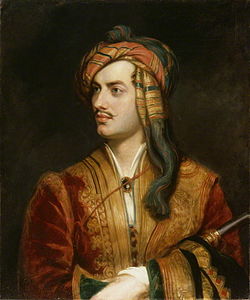| Lord Byron in Albanian Dress | |
|---|---|
 | |
| Artist | Thomas Phillips |
| Year | 1813 |
| Type | Oil on canvas, portrait |
| Dimensions | 130 cm× 102 cm(50 in× 40.1 in) |
| Location | Government Art Collection, Athens |
Lord Byron in Albanian Dress is an oil on canvas portrait painting by the English artist Thomas Phillips, from 1813. [1] [2] [3]

